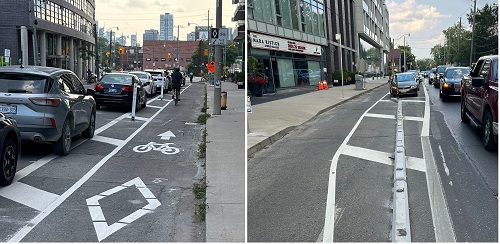That infamous 1.2% … The Revolution of the Saints
TORONTO – “…was a text on my reading list in my last year at University. It is a study, of the radical political response of the Puritans to disorder in the 18th century, as a first and unremitting determination to transform on the basis of an ideology the existing political and moral order. The religious zealots (the Orange Order and the Family Compact still operating in post-war Toronto) it spawned have not disappeared But this is not about them …entirely.”
(“The revolution of the saints. A study in the origins of radical politics” by Michael Walzer, 1965)
While cynical American politicos reduce all debates to their succinct basic arguments: “do we have a dog in the fight”; more politely put, which interests are we defending and how will they nurture our purposes and improve our [economic] goals.
Disagree with them all you like but they have a point. If there is a cost, there should be a commensurate benefit for the benefit of the greatest number – assuming that the cost is borne by the general public for the public good. That, presumably, is the reason “data- driven” decisions gain ever more credibility: “numbers count” and lend legitimacy.
My family owns three bicycles. None of them are used for travelling to and from work. The City, Province and Census Canada seem to agree that approximately 1.2% of Toronto’s residents (no age or nature of employment restrictions) “use bikes”. That would suggest that, at best, approximately 36,000 people can avail themselves of bike lanes – weather permitting.
According to the same sources cited above, the “Labour participation rate” among those able to work (15 and older) hovers in the 62% -67% range., suggesting that approximately 2,000,000 (two million) Torontonians need some sort of “road infrastructure” to go back and forth from wealth generating locations.
The debate between those who favour bike lanes typically, nearly always, disregard the fact that the discussion is a zero-sum game: if I get what I want, you lose. Maybe the 36,000 cyclists see great personal benefit to moving around on bikes – God Bless them – but the ability of emergency and delivery vehicles to reach their “destinations” in a timely (efficient) and cost-effective basis is no laughing matter.
What is risible is the pretension that the city is better-off with the costly installation of bike lanes on main thoroughfares to facilitate the “mobility” of a portion of those 36, 000 at the expense of the 2,000,000 and the economy that sustains them. The advocates for that 1.2% seem almost evangelical in their zeal to justify the $48 million they say it will cost to “dismantle” the aforementioned lanes and restore them to their original use. It had cost an outlay of $27 million to convert them from “four-wheel” vehicles to the two-wheel variety.
The traffic bottlenecks they create are enough to prompt profanities from normally urbane users of the English language. We would do the research to weigh the cost benefit analysis to taxpayers and the economy of Toronto in any decisions having to do with the presence of bike lanes where once the car reigned supreme. Bikes lanes have taken on the halo of a “religious fervour” that is now the underlying theme of debates at City Council.
Tactically, it appears, it may soon be illegal to admit to values Christian; and everyone knows Christians are responsible for everything wrong in this city and the country. Councillor Gord Perks says so. It is virtually impossible to ignore his debate at City Council essentially calling for a beat-down on all things suggesting any vestige of Christianity from the City.
Jesus, save us!
In the pics above, two images of the recent changes made on Dundas Street East from Logan Avenue to Pape Avenue to enhance bike lanes (photo from Twitter X / @TO_Cycling_Ped)




